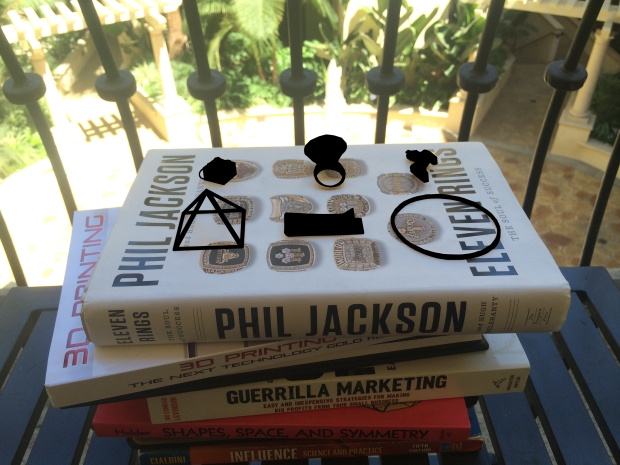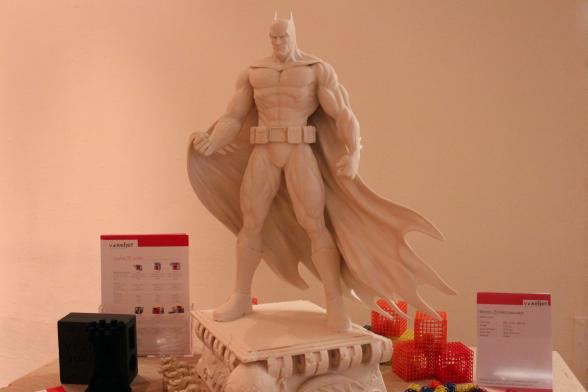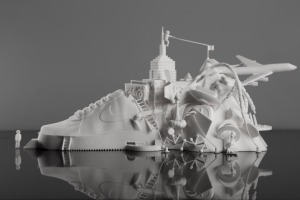As for the pieces..
Just wait on it.

As for the pieces..
Just wait on it.

Coming soon on kickstarter..

The very beginning
110,000 – 73,000 B.C. – Decorative sea shell beads are found in the archeological digs in Morocco which were most likely used as amulets.
Introduction of gold jewelry
4400 B.C. – Ancient Thracian civilization produced the oldest known jewelry made from gold.
Copper & Gemstone Era
5000 – 30 B.C. – Copper is introduced as a material. Gold arrives in Egypt around 4000 BC. Many jewelry designs based on scarab beetles, scrolls, winged birds, tigers, jackals, etc were widely made artifacts of jewelry.
Religion brings widespread ceremonial jewelry adoption
1066 – 1485 – With the help of religion, Medieval jewelry prospered throughout Europe. Hair and clothing were popular choices for jewelry during religious ceremonies. Many of these pieces were adorned with gemstones such as rubies, sapphires, pearls, emeralds and diamonds.
Roaring Twenties & Art Deco
1920 – 1935 – The Roaring Twenties brought the rise of the Art Deco. This introduced jewelry filled with geometric shapes, vibrant colors, intricate designs, cubism, modernism and oriental art. It also popularized wristwatches.
Post World War II
1939 – The influence of World War II brought widespread embargoes on gemstones. Metal based designs soon become the popular choice of jewelry. Diamonds soon solidified its spot as the most popular gemstone with powerful marketing campaigns, “A diamond is forever”.
3D printing and the internet of everything
Now – 3D printing technology along with sites like http://www.shapeways.com (which is now offering gold as a material choice) are once again changing the way jewelry is manufactured and customized. In the future, these accessories will have sophisticated technology built into them allowing one to be connected anywhere in the world.

Here is a list of “prosumer” quality 3D printers out right now that I think are worth your attention, money and time. By prosumer, I am referring to high quality 3D printing machines made for those who already know how to use the technology such as engineers, architects, modelers, etc. Some are easier than others to set up and use, so take your own skill level into consideration when choosing. Those who are new to the technology are best served learning by building their own or starting out basic – such as the Replicator Mini or the Cubify Cube 3. The typical price range for prosumer 3D printers go from $2,000-$4,000.
MakerBot Replicator (5th Generation)
http://store.makerbot.com/replicator
Ultimaker 2
https://www.ultimaker.com/pages/our-printers/ultimaker-2
Form 1
http://formlabs.com/products/our-printer
CubePro
Pegasus Touch
http://fslaser.com/products/3d-printers/pegasus-touch-laser-3d-printer-by-fsl3d
Any of these printers is a great purchase! Personally, I recommend the Ultimaker 2 for it’s combination of price, speed, quality, reliability and ease of use. It is a wonderful machine for all skill levels. And not to mention it is impeccably designed and aesthetically pleasing with it’s glowing white aura. Both the Form One and Pegasus Touch use SLA (Stereolithography) technology which many consider “true” 3D printing technology and is capable of very detailed prints however there is still a ways to go before it is far superior than the FDM (Fused Deposition Modeling) process.
Those new to 3D printing who are deciding between professional grade consumer printers (prosumer) should take into account support, size of community and ease of use. Here is how I would group the 3D printers:

When most people hear ‘3D printing’ they picture it in a manufacturing sense. You know… a factory-machine chugging out units of anything you can imagine. What people miss is the true game changing ability to create anything and everything. This lends great to makers and artists alike who have a ‘If I can dream it, I can make it’ mentality.
Since the early introduction of consumer-level 3D printers, those who were associated with the 3D graphics modeling industry had suddenly found a new play toy. 3D printers instantly turned 3D graphic modelers into artists. Customization became key. Artists who had difficulty making certain shapes or structures can now use 3D printing to bring that idea to life – no matter the size!
So, here are some amazing works of 3D printed art:
Modla x Damilola Odusote Nike Air Force 1 3D Printed Sculpture

http://www.damilolaartist.com/
Nike of Samothrace
http://cosmowenman.wordpress.com/
Monochromatic Radiance
http://www.joshharker.com/blog/
Memorial Bust of a Woman (self-portrait)
Quixotic Divinity Headdress
http://www.joshharker.com/blog/
Bust of a Youth
http://stevenhopwoodlewis.com/
Thru Religion
3D Printed Arabic Ceiling
3D Printed Room
http://www.digital-grotesque.com/
Noisy Boy from Real Steel

Many people don’t realize it but the impacts of 3D printing are potentially far reaching enough to be considered the ‘Next Industrial Revolution’! It’s impacts will mostly be felt on the supply chain and manufacturing segments of a business. Well how you ask?
Multiple ways:
The field is so new that it is just waiting to be revolutionized.

We have also updated our layout. Let us know your thoughts!

So you want to get your hands on some freshly printed jewelry? With the 3D printed goods market still evolving there are already many places to find jewelry online. Some of these marketplaces may be already be familiar. You’ll find all of that below:
Etsy – One of the Internet’s largest marketplaces for handmade products. Naturally, this community lends itself to 3D printed objects. Although technically 3D printing isn’t a “handmade” process the design, creation and DIY movement of the industry certainly places it into the handmade category. There are literally thousands of jewelry designs to choose from, many of which are 3D printed!
Shapeways – Another marketplace where one can find a design they love, choose its material and have it shipped right to their door. Likewise, one can model their own product, upload it to Shapeways, choose the material and have that delivered as well. It is a wonderful marketplace for sellers and creative thinkers alike.
Nervous System – Industrial design studio that integrates processes and patterns found in nature to create unique and affordable art, jewelry, and housewares. Very heavily technology focused – designs are created using algorithms!
Hot Pop Factory – This Toronto based creative design team uses digital fabrication technology to bring ideas to life. With a keen focus on the artistic side of 3D printing the designs from Hot Pop Factory sure do raise eyebrows. Hot Pop Factory provides services such as design service, 3D interactivity and education on the industry itself. This start-up is sure to be a staple in the creative side of 3D printing.

Here are some gorgeous examples of 3D printed jewelry found online. The possibilities are quite literally endless!
Some metal 3D printed jewelry examples:
Stainless Steel
Bronze
Many metals cannot be 3D printed (yet) but jewelry makers are already making wax molds using 3D printers. Shown below is a cast for a silver ring.

If you have not heard of 3D printing then shame on you! Haha, no really it is changing the world. 3D printing is a form of additive manufacturing in which a digital model of an object can become a solid, 3D dimensional object. Nowadays just about any material can be used as 3D printer food – plastics, ceramics, metals and even chocolate. 3D printing is a mainstay in the Maker/DIY Movement and considered a wave in the wake of the next Industrial Revolution. But that is a topic for another blog. Our focus here at Mocci is on 3D printing and jewelry.
How will 3D printing revolutionize the jewelry industry?
A couple ways.
The biggest challenge is disrupting the precious gem portion of the jewelry industry. With current technology, it is impossible to 3D print highly coveted fine ores such as diamond or gold. In this case, jewelry is molded from 3D printed wax castings by the lost wax casting method. Synthetic gems like sapphire and emerald are possible to recreate but will people even want them? Perhaps an amazing highly coveted composite material will be made in the future or scientists will find a way to 3D print gold.
But before that happens makers everywhere are still able to design and create beautiful, complex jewelry with 3D printing.